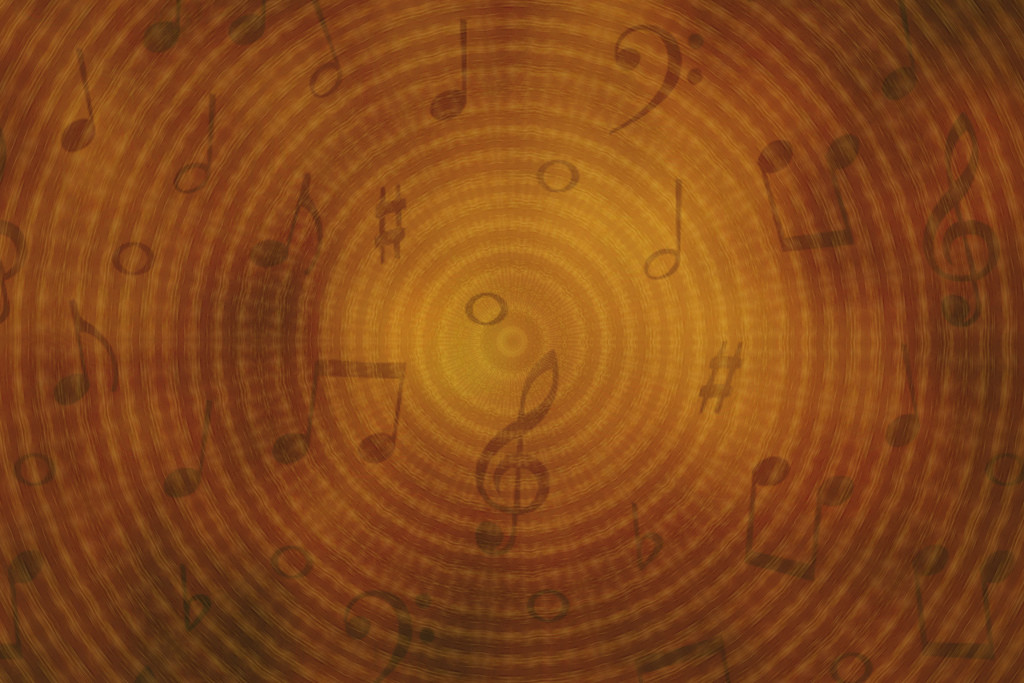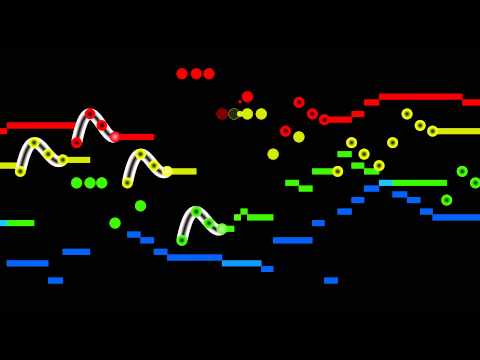3.2: Terms That Describe Texture
- Page ID
- 72361
Introduction
In music, texture is how the melodic, rhythmic, and harmonic materials are combined in a composition, thus determining the overall quality of the sound in a piece. Texture is often described in regard to the density, or thickness, and range, or width, between lowest and highest pitches, in relative terms as well as more specifically distinguished according to the number of voices, or parts, and the relationship between these voices. For example, a thick texture contains many “layers” of instruments.
In musical terms, particularly in the fields of music history and music analysis, some common terms for different types of texture are:
- Monophonic
- Polyphonic
- Homophonic
- Homorhythmic
- Heterophonic
We will focus on monophony, polyphony, and homophony in this course.
Formal Terms
There are many informal terms that can describe the texture of a piece of music (thick, thin, bass-heavy, rhythmically complex, and so on), but the formal terms that are used to describe texture all describe the relationships of melodies and harmonies. Here are definitions and examples of the four main types of texture. For specific pieces of music that are good examples of each type of texture, please see below.
Monophonic
Monophonic music has only one melodic line, with no harmony or counterpoint. There may be rhythmic accompaniment, but only one line that has specific pitches. Monophonic music can also be called monophony. It is sometimes called monody, although the term “monody” can also refer to a particular type of solo song (with instrumental accompaniment) that was very popular in the 1600s.
Examples of Monophony
- One person whistling a tune
- A single bugle sounding “Taps”
- A group of people all singing a song together, without harmonies or instruments
- A fife and drum corp, with all the fifes playing the same melody
Listen: Monophony
Listen for the cello performing a single melody in Bach’s Cello Suites.
Listen to the monophony in “Llibre Vermell de Montserrat [Catalonia, 14th Century]: Advocatam innocemus” by Namur Chamber Choir.
Homophonic
Homophonic music can also be called homophony. Describing homophonic music you may hear such terms as chords, accompaniment, harmony or harmonies. Homophony has one clearly melodic line; it’s the line that naturally draws your attention. All other parts provide accompaniment or fill in the chords. In most well-written homophony, the parts that are not melody may still have a lot of melodic interest. They may follow many of the rules of well-written counterpoint, and they can sound quite different from the melody and be interesting to listen to by themselves. But when they are sung or played with the melody, it is clear that they are not independent melodic parts, either because they have the same rhythm as the melody (i.e. are not independent) or because their main purpose is to fill in the chords or harmony (i.e. they are not really melodies).
Examples of Homophony
- Choral music in which the parts have mostly the same rhythms at the same time is homophonic. Most traditional Protestant hymns and most “barbershop quartet” music is in this category.
- A singer accompanied by a guitar picking or strumming chords.
- A small jazz combo with a bass, a piano, and a drum set providing the “rhythm” background for a trumpet improvising a solo.
- A single bagpipes or accordion player playing a melody with drones or chords.
Listen: Homophony
In Mozart’s Piano Concerto No. 21, Andante (“Elvira Madigan”), listen for one independent melodic line accompanied by other voices or instruments.
Polyphonic
Polyphonic music can also be called polyphony, counterpoint, or contrapuntal music. If more than one independent melody is occurring at the same time, the music is polyphonic.
Examples of Polyphony
- Rounds, canons, and fugues are all polyphonic. (Even if there is only one melody, if different people are singing or playing it at different times, the parts sound independent.)
- Much Baroque music is contrapuntal, particularly the works of J.S. Bach.
- Most music for large instrumental groups such as bands or orchestras is contrapuntal at least some of the time.
- Music that is mostly homophonic can become temporarily polyphonic if an independent countermelody is added. Think of a favorite pop or gospel tune that, near the end, has the soloist “ad libbing” while the back-up singers repeat the refrain.
Listen: Polyphony
Bach’s Fugue in D Major is a good example of polyphony, listen for four voices occurring at the same time. Each voice is an imitation of the other, entering the piece with the same melody.
Heterophonic
A heterophonic texture is rare in Western music. In heterophony, there is only one melody, but different variations of it are being sung or played at the same time.
- Heterophony can be heard in the Bluegrass, “mountain music”, Cajun, and Zydeco traditions. Listen for the tune to be played by two instruments (say fiddle and banjo) at the same time, with each adding the embellishments, ornaments, and flourishes that are characteristic of the instrument.
- Some Middle Eastern, South Asian, central Eurasian, and Native American music traditions include heterophony. Listen for traditional music (most modern-composed music, even from these cultures, has little or no heterophony) in which singers and/or instrumentalists perform the same melody at the same time, but give it different embellishments or ornaments.
Listen: Determine the Texture
Determine the texture (monophonic, homophonic, or polyphonic) in each piece of music:
G. B. Pergolesi, Stabat Mater in F minor, arranged by J. S. Bach on the text of Psalm 51: “Tilge, Höchster, meine Sünden,” BWV 1083, c. 1746.
Contributors and Attributions
- Musical Notes texture. Authored by: duncan johnston. Located at: https://www.flickr.com/photos/duncanjohnston/4974286427/. License: CC BY: Attribution
- Llibre Vermell de Montserrat [Catalonia, 14th Century]: Advocatam innocemus by Namur Chamber Choir . Authored by: VWIntro's channel. Located at: https://youtu.be/GbiZulU70J0. License: All Rights Reserved. License Terms: Standard YouTube License
- Mozart, Piano Concerto No. 21, Andante (Elvira Madigan). Authored by: smalin. Located at: https://youtu.be/rKZr3ExeXUc?list=PLF03B0C0C7E1EABCB. License: All Rights Reserved. License Terms: Standard YouTube License
- Bach, Fugue in D Major, WTC II, BWV 874. Authored by: smalin. Located at: http://www.youtube.com/watch?v=m0HoK8yZS1c. License: All Rights Reserved. License Terms: Standard YouTube License
- Johann Sebastian Bachu2014Partita No. 2, Hilary Hahn. Authored by: Adagietto. Located at: https://www.youtube.com/watch?v=6KaYzgofHjc. License: All Rights Reserved. License Terms: Standard YouTube License
- Chopin Waltz Op.69 No.2 (Ashkenazy). Authored by: ardiem. Located at: https://youtu.be/cxG-kOTMgaA. License: All Rights Reserved. License Terms: Standard YouTube License




